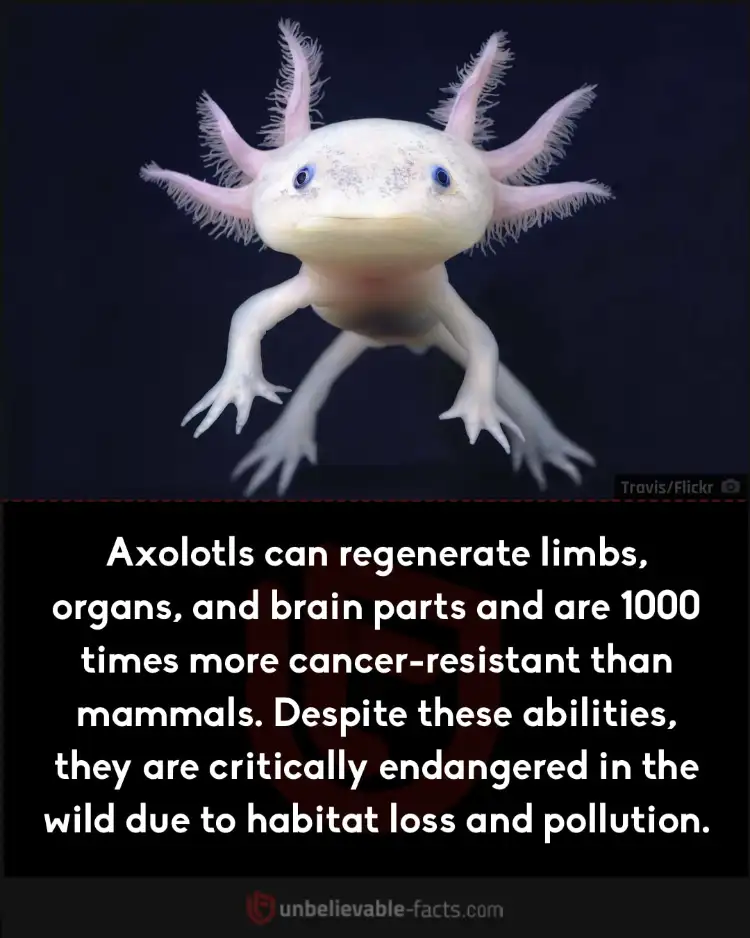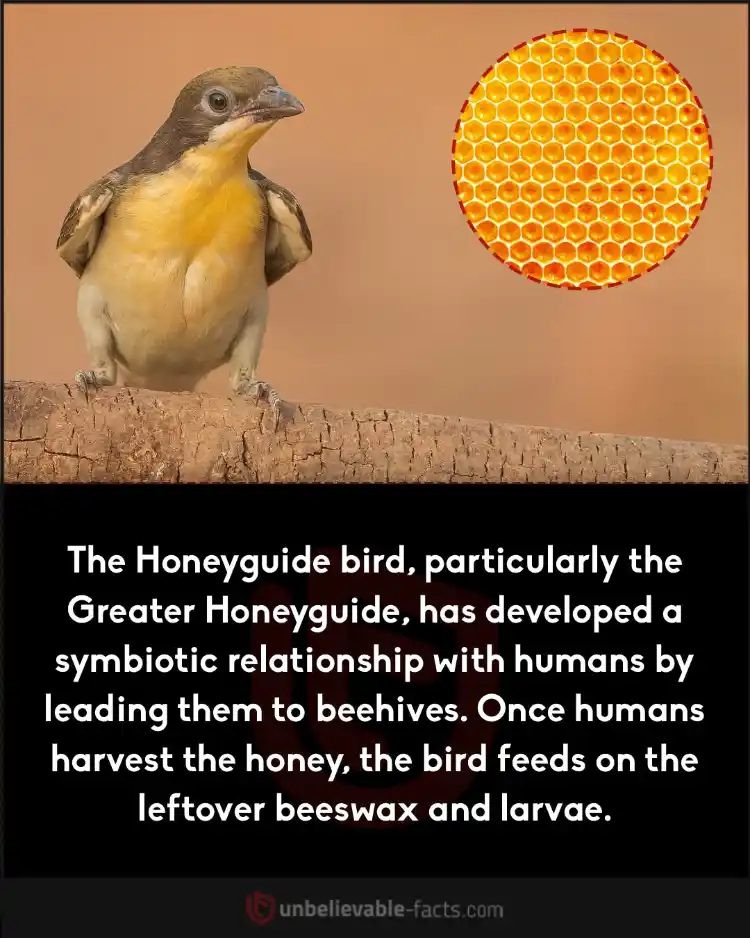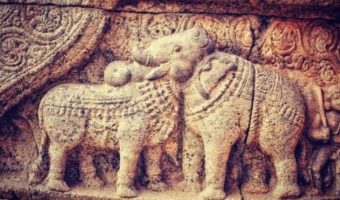50 Cool Animal Facts That Will Turn You Into an Animal Trivia Expert
Table of Contents
30/50
Axolotls regenerate limbs, resist cancer, yet are critically endangered.
Axolotls can regenerate limbs, organs, and brain parts and are 1000 times more cancer-resistant than mammals. Despite these abilities, they are critically endangered in the wild due to habitat loss and pollution.
29/50
Brazilian termites built mounds over millennia, moving vast amounts of soil.
Scientists in Brazil discovered a termite supercolony up to 4,000 years old, covering an area as large as Great Britain. These termites moved enough soil to equal the volume of 4,000 Great Pyramids of Giza.
28/50
Honeyguide bird leads humans to beehives, eats leftover wax, larvae.
The Honeyguide bird, particularly the Greater Honeyguide, has developed a symbiotic relationship with humans by leading them to beehives. Once humans harvest the honey, the bird feeds on the leftover beeswax and larvae.
27/50
Jacob Sheep, majestic Metal Horns and Piebald Beauty!
The Jacob sheep looks absolutely metal. This British breed of domestic sheep has four horns, and some may even have as many as six horns! Males have larger and more impressive horns than females, and their two vertical horns can grow up to 2 feet long! The Jacob sheep is also piebald, which means it is dark-colored with areas of white wool.
26/50
American kestrel, smallest common falcon, similar size to Mourning Dove.
This is an American kestrel, the smallest and most common falcon in North America. Though they vary in size, most are about the same size and shape as a Mourning Dove, and they are also called the sparrow hawk.
25/50
Proboscis monkey uses large nose to attract mates, amplify calls.
This is the proboscis monkey, which has an unusually large nose that can be longer than 4.0 inches! Males of the species use their fleshy, pendulous noses to attract mates. Scientists say that these oversized organs create an echo chamber that amplifies the monkey’s call, which impresses females and intimidates rivals.
24/50
Pizzly bear, a grizzly-polar hybrid.
This is a pizzly bear, a grizzly–polar bear hybrid. This rare hybrid has occurred both in captivity and in the wild, and scientists believe climate change is the reason. As the Arctic sea ice thins, polar bears are driven further south, where they meet grizzlies and mate with them.
23/50
Tigons: Hybrid offspring of tigers and lions, combining stripes and spots.
Are they tigers or lions? Actually, both! Meet the tigon, the hybrid offspring of a male tiger and a female lion. Tigons have visible characteristics from both parents, and they can have both stripes from the father and spots from the mother. Adult tigons are about the size of their parents and weigh around 400 lb.
22/50
Jaguarundi is a wild cat, larger than domestics, with an elongated body and long tail, native to the Americas.
This is the jaguarundi, a wild cat that’s twice as large as a domestic cat, and has an elongated body, short legs, a small and narrow head, a short snout, and a long tail. Native to the Americas, the jaguarundi is most closely related to the cougar.
21/50
African “giraffe cat” jumps high, expert hunter with long legs
Meet the serval, a species of wild cat native to Africa. This small, slender cat has a lean body, long legs, and a short tail. Its small head rests on an extra-long neck, which has earned it the nickname “giraffe cat.” Servals can stand on their hind legs and jump more than 9 feet high to grab a bird right out of the air! They are some of the best hunters in the cat world.



























